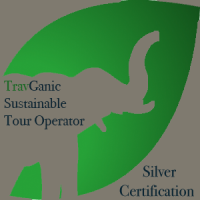Mount Everest to be cleaned up of garbage and corpses.
To keep the world’s highest mountain clean, Nepali Mountaineering expedition operators are ready to launch a joint effort, a massive drive to clean Mount Everest this spring season of 2019.
The combined initiative, which the government and non-government agencies plan, intends to collect dead bodies and trash left behind by the climbers from the South Col-Camp 4 and Camp two of Mount Everest.
Mountaineers have long been treating Everest as a dumping ground by abandoning oxygen bottles, cans, ladders, wrappers, faeces, and bags filled with faecal matters in the higher camps. The worst affected areas are the South Col at 7900 meters and Camp two at 6500 meters every year during the spring climbing season. As a result, it has been estimated that more than three hundred bodies of climbers are left behind.
The base camp will be established by the third week of April when the stakeholders plan to start this colossal event. There will be two groups of assigned Sherpas consisting of five members each. They will be deployed at Camp two and the South Col to collect and pack the trash.
The climbers, along with their support crew who rotate to Camp two and South Col to acclimatize, will bring the packed rubbish to the base camp. Those who bring down the trash will be rewarded financially.
The Department of Tourism has estimated that around 500 foreign climbers and more than 1000 climbing crews will be visiting the higher camps on Everest this season while preparing to scale the highest peak and Mount Lhotse 8501 m, the fourth highest mountain in the world.
The Department of Tourism’s record shows that more than three hundred foreign climbers, along with their support crew, have left for the Khumbu region on their attempt to climb Mount Everest and Lhotse.
Most of the Mountaineers make a final push for the summit in the third week of May.
The Department of Tourism’s Director General Dandu Raj Ghimire claimed that it will be the largest ever cleaning campaign on Everest during a press conference. He said, “We expect to bring hundreds of tonnes of garbage from the higher camps on the mountain this season,” encouraging the climbers from the world over to join in on this noble cause to clean up Everest.
The government has been unsuccessful in implementing it is 2014 mountaineering rule, which states that every member of an expedition team has to bring back at least eight kilograms of garbage besides their trash from expeditions on Mount Everest, Lhotse, and Nuptse; many commercial expeditions have left behind tonnes of waste all over the mountain. “However, this upcoming event should be successful,” Ghimire wishes.
Ministry of Culture, Tourism and Civil aviation, Environment, Nepal mountaineering association, Nepal army, Khumbu Pasang Lhamu rural municipality, Sagarmatha Pollution Control Committee and Nepal Tourism Board have decided to take an active role in this campaign.
Tika Ram Gurung, the Nepal Mountaineering Association secretary, hopes that most high-altitude support staff who bring loads to the higher camps will responsibly descend with the garbage. “They will not be just making extra income but contributing in a big way towards this noble cause,” he said. The price per kilo of garbage brought down is yet to be determined and is currently in discussion.
The estimated cost for this campaign is Rs3 million. This campaign is funded by several sponsors, such as The Coca-Cola Company, the World Wildlife Fund, financial institutions, and private businesses.
The Chairman of the Sagarmatha Pollution Control Committee (SPCC), Ang Dorje Sherpa said, “This campaign will be continued in the years to come”; he also said that this campaign would be facilitated at least two ‘icefall doctors’ in the higher camps. “SPCC will be monitoring the activities of this campaign from base camp,” he said. “Non-biodegradable garbage will be flown back to Kathmandu.”
Dambar Parajuli, the Expedition Operators Association of Nepal ( EOAN) president, said that EOAN would back the campaign. “All climbers will happily contribute,” he added.
Check out our Trekking packages for Nepal, Bhutan, India, and Tibet.
















